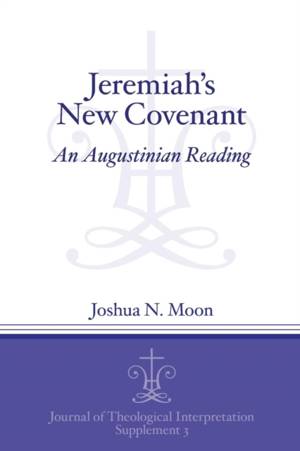
- Afhalen na 1 uur in een winkel met voorraad
- Gratis thuislevering in België vanaf € 30
- Ruim aanbod met 7 miljoen producten
- Afhalen na 1 uur in een winkel met voorraad
- Gratis thuislevering in België vanaf € 30
- Ruim aanbod met 7 miljoen producten
Omschrijving
The struggle to read Jeremiah 31:31-34 as Christian Scripture has a long and divided history, cutting across nearly every major locus of Christian theology. Yet little has been done either to examine closely the varieties of interpretation in the Christian tradition from the post-Nicene period to the modern era, or to make use of such interpretations as helpful interlocutors. This work begins with Augustine's interpretation of Jer 31:31-34 as an absolute contrast between unbelief and faith, rather than the now-standard reading (found in Jerome) of a contrast between two successive religio-historical eras--one that governed Israel (the "old covenant") and a new era and its covenant inaugurated in the coming of Christ. Augustine's absolute contrast loosened the strict temporal concern, so that the faithful of any era were members of the "new covenant." The study traces Augustine's reading of an absolute contrast in a few key moments of Christian interpretation: Thomas Aquinas and high medieval theology, then the 16th and 17th century Reformed tradition. The thesis aims at a constructive reading of Jer 31:31-34, and so the struggle identified in these moments in the Christian tradition is brought into dialogue with modern critical discussions from Bernhard Duhm to the present. Finally, the author turns to an exegetical argument for an 'Augustinian' reading of the contrast of the covenants.
Specificaties
Betrokkenen
- Auteur(s):
- Uitgeverij:
Inhoud
- Aantal bladzijden:
- 302
- Taal:
- Engels
- Reeks:
- Reeksnummer:
- nr. 3
Eigenschappen
- Productcode (EAN):
- 9781575067025
- Verschijningsdatum:
- 30/06/2011
- Uitvoering:
- Paperback
- Formaat:
- Trade paperback (VS)
- Afmetingen:
- 152 mm x 229 mm
- Gewicht:
- 449 g

Alleen bij Standaard Boekhandel
Beoordelingen
We publiceren alleen reviews die voldoen aan de voorwaarden voor reviews. Bekijk onze voorwaarden voor reviews.











